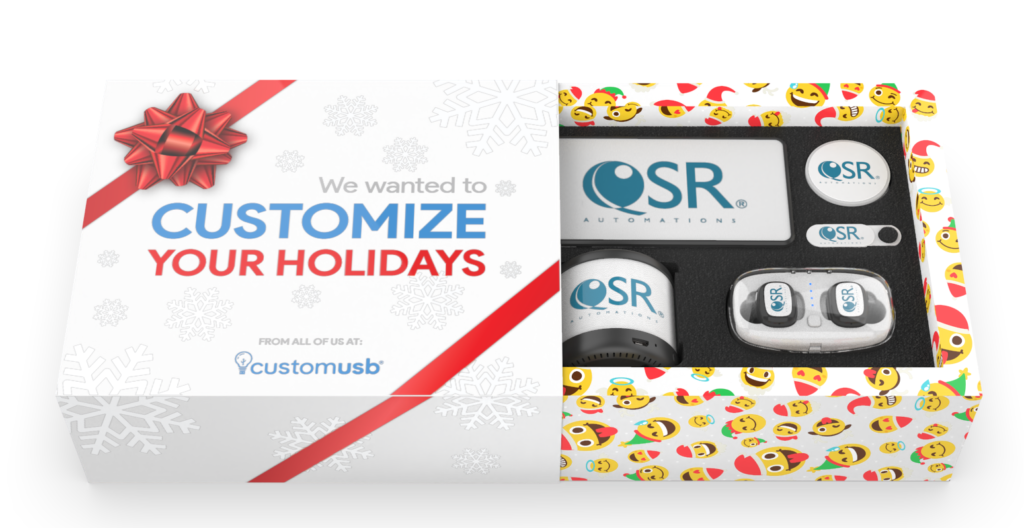Leveraging Custom Kits As a Powerful Sales Tool
The pandemic has disrupted the science of customer acquisition for many companies across the globe. In-person interaction and tangible exchanges with clients have been largely eliminated as a normal business practice, leaving a void in human interaction.
Government officials continue to dissuade ‘avoidable encounters’ such as casual lunch meetings with customers and prospects, citing an inherent risk of transmitting COVID, and perpetuating the pandemic.
Much of what we do as sales professionals is geared toward sparking and maintaining symbiotic relationships with our prospects, a practice that is unequivocally foundational to sales success. We aim to demonstrate our values and allow clients to experience our professional integrity so they will feel comfortable in trusting us to deliver on our promises.
In a recent survey conducted by McKenzie, almost 90 percent of sales have moved to a videoconferencing(VC)/phone/web sales model. Digital platforms such as Google Meet and Zoom have been helpful for companies in maintaining communication channels.
However, virtual platforms are inherently impersonal, and are no substitute for in-person visits, handshakes, and lunch meetings.
Custom Swag Kits

Custom swag kits are not a new concept for sales teams, and are a proven tactic for expanding a brand’s physical reach at critical points in the sales funnel. Branded company swag serves as a sales enablement vehicle for top-of-mind position, establishing reciprocity and communicating brand values.
To help fill the void in today’s diminished business dynamic, sales leaders have turned to custom kits and branded swag as a means to compensate for the loss of tangible touch points. This trend has contributed to a surge in demand for branded swag kits and promotional products at large.
How It Works
Creating and delivering impactful custom swag kits is a straightforward process. The process is further simplified when working with a vertically integrated supplier that manufactures the packaging as well as the promotional products included in the kit.
Creating custom kits is a 3-step process:
- Presentation design
A successful custom kit design begins with the business objective. The desired effect is carefully considered, and will dictate the appearance and contents of the kit. - Product selection
Selecting the right products for the scenario is important for maximizing the swag’s shelf life, and thus strengthening the ROI. We aim to select products that are:- Relevant
- Purposeful
- Valuable
- Drop ship & logistics
Logistics related to warehousing and delivering custom kits are simpler than ever, and largely depend on the scenario. The following 3 decisions are considered:- Will the kits be sent out in one batch or one at a time?
- Will they be sent directly to end recipients, or to the purchasing party?
- If the kits are to be sent one at a time, as needed, who will warehouse the inventory and manage the shipping?
Measuring Results
Measuring the impact of custom kits on your sales process allows us to better understand the opportunities and make changes to optimize our investments for highest returns.
There are 3 critical points in the customer journey that commonly present an opportunity for persuasion by custom kits. They are:
- High-powered first impressions
Custom kits can serve as an incredible first impression. Thoughtful unboxing and gifting of promotional products helps prime the sale and increase conversions. - Reactivation of high value dormant clients
Sending a high value dormant client a thoughtful swag kit is an effective tactic to remind them of our products and services. - Customer retention and loyalty
Rewarding high value or long term customers with branded swag kits is a very effective means of showing appreciation and reiterating our brand promise.
Keeping score
Incorporating custom kits into our sales process should be a measured investment, and keeping track of the impact on conversion or retention rates is critical to making informed decisions.
Sales professionals are encouraged to take note when a swag kit is sent to a client, and it is best to indicate the particular phase of the sales funnel.
For example:
| Company | Sales stage | Kit Sent | Revenue |
| Company X | Awareness | 4-Jan | $4,000 |
| Company Y | Consideration | 6-Feb | $7,500 |
| Company Z | Customer | 6-Nov | $6,250 |
Keeping record of this activity will allow for a high quality data analysis after some substantial history has been acquired. The analysis may be further improved by deeper segmentation, including metrics such as:
- Customer Lifetime Value (CLV)
- Cost Per Acquisition (CPA)
- Customer Acquisition Cost (CAC)
- Referral rate
- Cross/Up sell rate
Conclusion
The pandemic has transformed the way we conduct business, and has forced sales teams to seek out alternative tactics for building rapport.
Custom kits have played an increasingly popular role in bridging the virtual gap and establishing physical, tangible engagement with prospects and clients.